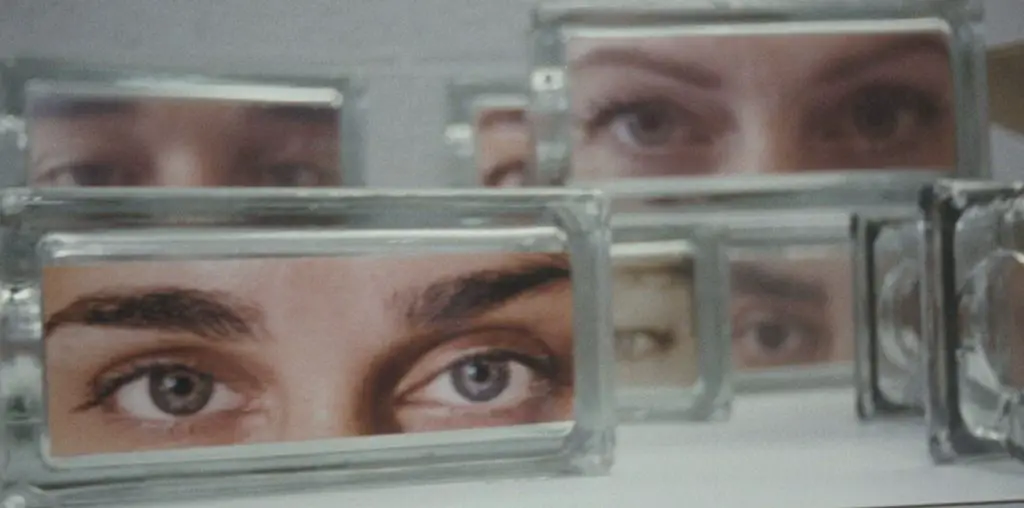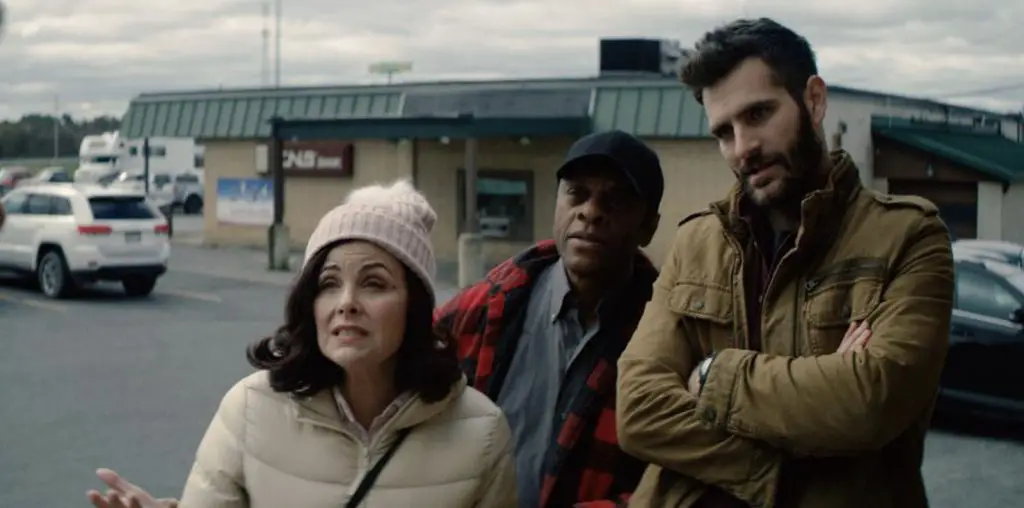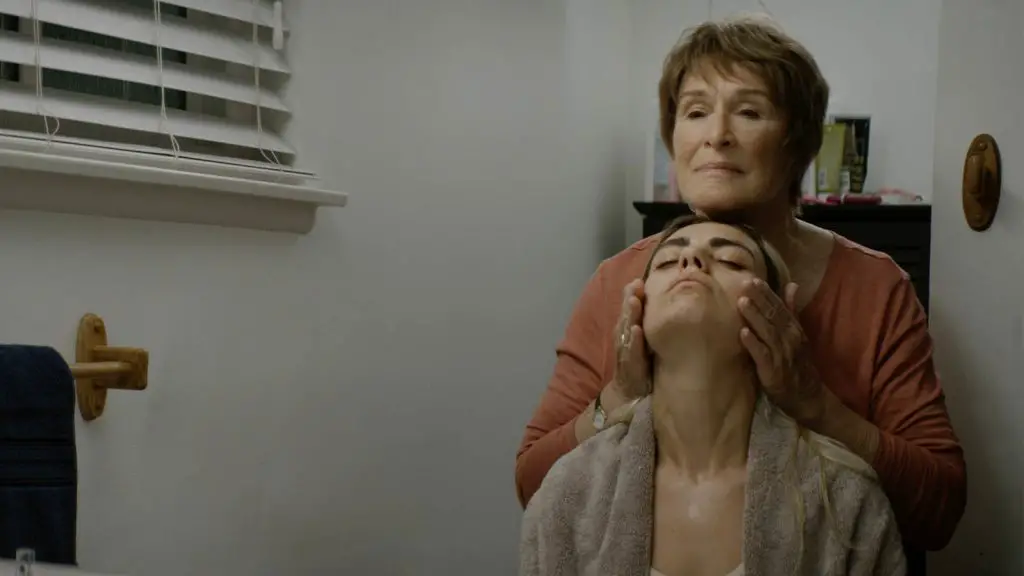
NOW ON HBO! It’s amazing what you can get done with some empty opioid pill bottles and a pile of lifeless bodies in the awe-inspiring documentary All the Beauty and the Bloodshed by director Laura Poitras. It opens with famed art photographer Nan Goldin and her group preparing a demonstration in a wing of a museum bearing the name Sackler. The Sackler family donates money and collection pieces to museums worldwide, maintaining the philanthropic reputation of the family name. They also own Purdue Pharma, the company that patented Valium and, years later, Oxycontin.
Marketed as a non-addictive opioid treatment for moderate pain, Oxycontin started a legal heroin scrounge that murdered thousands and destroyed communities across the United States. Instead of the profits being divided amongst shadowy cartels, all the billions went to Purdue and the Sacklers. So Goldin and her group throw dozens of empty pill bottles into a fountain and lay down dead across the floors of the Sackler Wing. Goldin herself has been strung out on Oxy, having been prescribed it despite a previous dependency.
The film follows Goldin’s crusade to bring attention in the art world to the Sackler’s atrocities. We see her use her influence to pressure the galleries and museums she has pieces in to drop their patronage by staging more group death simulations. We also get to know this amazing artist as well as the halcyon downtown scene in New York that she rose from in the 1980s. Starting with her running away from home after her older sister’s suicide, we follow Goldin’s self-discovery among a marginalized society of artists, sex workers, and drug users. Her photo documentation of this shunned community has been recognized as groundbreaking, building her stature to stand up against Senator Jesse Helms then and the Sacklers now.
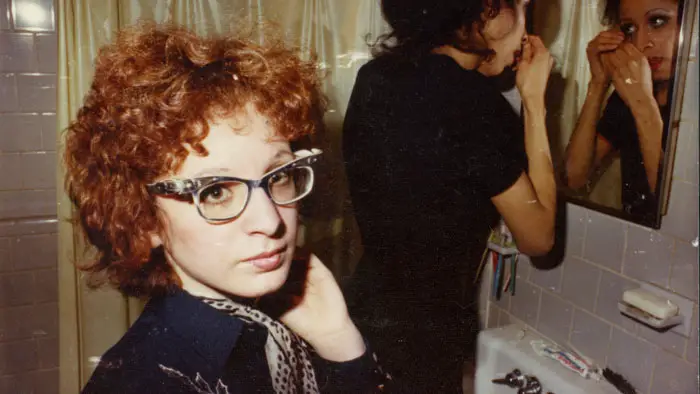
“…Goldin and her group preparing a demonstration in a wing of a museum bearing the name Sackler.”
In 1990 I came to New York to write. During my first few months attending Sarah Lawrence college, I was lent a copy of Nan Goldin’s Ballad of Sexual Dependency. This collection of photographs was the glowing doorway that opened up the world of artistic photography and, later, cinematography to me. Her work April crying at 7th and B. New York City 1985, with the blurred woman crying in a haze of red, showed me how emotions could be sculpted from form and light. I found images carried powers that met or exceeded that of words. So yes, I’ve been waiting for a documentary like All the Beauty and the Bloodshed for some time.
That Goldin’s story cumulates in her activist work against addiction profiteers is the icing on the counter-cultural cake. The irony is that the Sacklers took possibly the most fringe lifestyle in America, the life of a junkie, and mainstreamed it through an Oxycontin tsunami. The Sacklers created a nightmare where normal suburbanites were found OD’ed after shooting up in Red Robin restrooms. It is especially satisfying when the artist shows onscreen the Sackler family’s reactions while being forced to listen to statements from the families they had filled with corpses.
In a way, All the Beauty and the Bloodshed resembles one of those Godzilla movies guest starring many other giant monsters as we are treated to the behemoths of the 80s village scene. Besides Goldin, Poitras spotlights the great Cookie Mueller and David Wojnarowicz. Mueller, most recognizable as an actress from John Waters movies, has her writing career focused on here and justly so.
Yes, All the Beauty and the Bloodshed is almost like a class reunion for all that wild early 90s New York insanity. However, this is the portrait of Goldin that she so richly deserves. When Goldin was taking pictures of her street life, replete with strung out folks, it must have felt like she would fall off the earth’s edge. However, instead, the artist flew into the stars. The documentary is the great American story of the outsiders coming in and rising up. You need to see it.
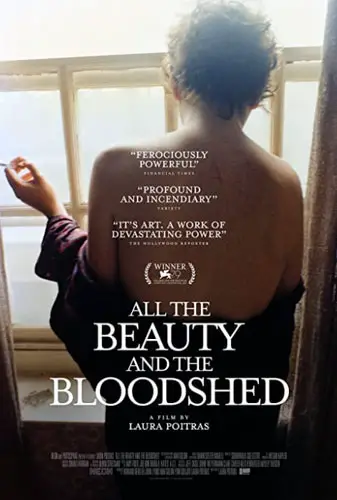
"…you need to see it."
